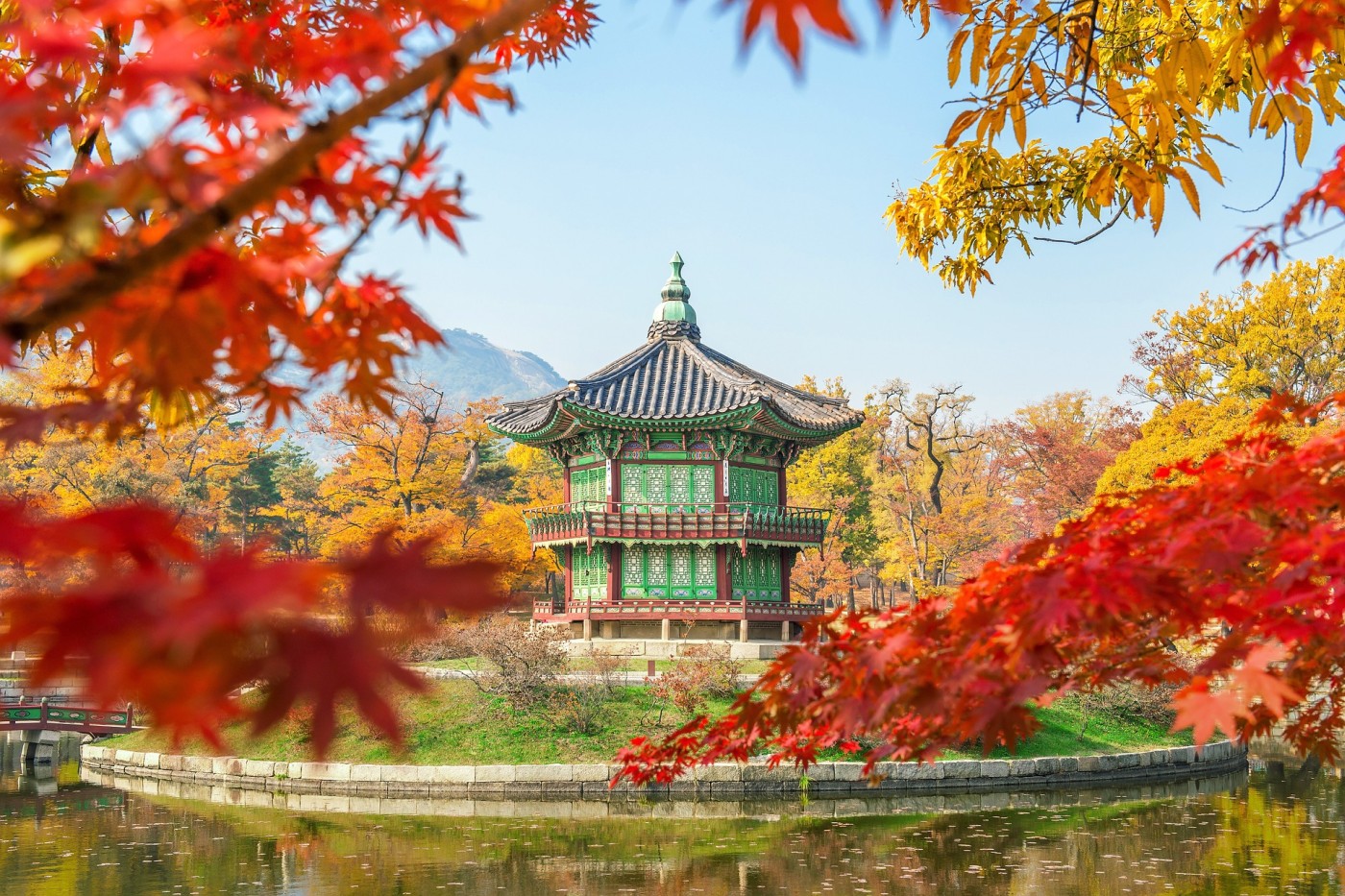Hello, future South Korea adventurers! If you’re wondering about the best time to visit South Korea, you’ve landed in the right place. South Korea is a captivating destination that beautifully merges ancient traditions with cutting-edge technology, offering a unique experience throughout the year. But timing your visit can truly enhance your journey, so let’s dive in and explore the best time to visit based on weather, seasons, events, and your personal interests.
Understanding South Korea’s Seasons
First things first, it’s crucial to understand that South Korea experiences four distinct seasons, each with its unique character and charm. The best time to visit South Korea depends on what you’re looking for – vibrant spring blooms, summer beach fun, fall foliage, or winter sports. Here’s a brief overview of what each season offers:
- Spring: March to May – Cherry blossoms, mild weather, and cultural festivals.
- Summer: June to August – Beach fun, music festivals, and hot, humid weather.
- Fall: September to November – Vibrant fall foliage, harvest festivals, and pleasant temperatures.
- Winter: December to February – Snow sports, cultural experiences, and cold weather.
Now that we have a basic understanding of the seasons let’s dive deeper into each one to help you decide the best time to visit South Korea for you.
Spring: The Season of Blooms
Timeline: March to May
Spring in South Korea is a magical time, with the best time to visit South Korea for nature lovers and those eager to witness the country’s famous cherry blossom festivals. Let’s break down what each month offers:
- March: Early spring is marked by plum blossoms and the start of warmer weather, with temperatures ranging from 35°F to 55°F (2°C to 13°C). Towards the end of March, the first cherry blossoms begin to appear.
- April: Mid-spring is when South Korea’s cherry blossom festivals reach their peak. Temperatures rise to a comfortable 45°F to 65°F (7°C to 18°C), making it an ideal time for outdoor activities.
- May: Late spring brings even warmer weather, with temperatures ranging from 55°F to 75°F (13°C to 24°C). The landscape is lush and green, and vibrant flowers are in full bloom.
Weather Conditions and Temperatures
Spring weather in South Korea is generally mild and pleasant, with temperatures ranging from 35°F to 75°F (2°C to 24°C). However, it can be a bit rainy, so packing a light jacket and an umbrella is a good idea.
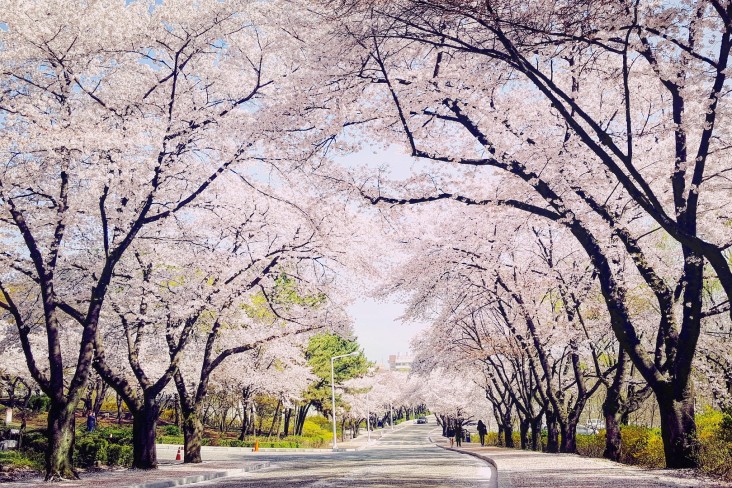
Key Events and Festivals in Spring
Spring is packed with exciting events and festivals, making it the best time to visit South Korea for culturally immersive experiences.
- Cherry Blossom Festivals (Beot-kkot): These festivals are a must-see, with streets, parks, and temples transforming into pink and white wonderlands. Top spots include Yeouido in Seoul, Jinhae in Changwon, and Gyeongju.
- Other Spring Events and Holidays:
- Holi Hai: A vibrant, color-filled festival celebrating the arrival of spring, typically held in March or April.
- Buddha’s Birthday (Seokga Tansinil): A significant religious and cultural event in May, featuring lantern festivals and parades.
Recommended Activities and Attractions in Spring
Spring’s mild weather makes it perfect for exploring historical sites, temples, and national parks. Here are some top activities and attractions:
- Visit Historic Sites: Explore South Korea’s rich history at places like Gyeongbokgung Palace and the Korean Folk Village.
- Hiking: Hit the trails in national parks like Bukhansan or Seoraksan to enjoy the spring blooms.
- Strawberry Picking: Spring is strawberry season in South Korea, so don’t miss out on this fun and delicious activity.
Pros and Cons of Visiting in Spring
Pros:
- Beautiful cherry blossoms and spring flowers
- Mild weather, perfect for outdoor activities
- Cultural festivals and events
Cons:
- Can be rainy, so pack accordingly
- Cherry blossom season can be crowded
- Not ideal for beach activities or winter sports
If you’re a nature lover or culture enthusiast, spring might just be the best time to visit South Korea for you.
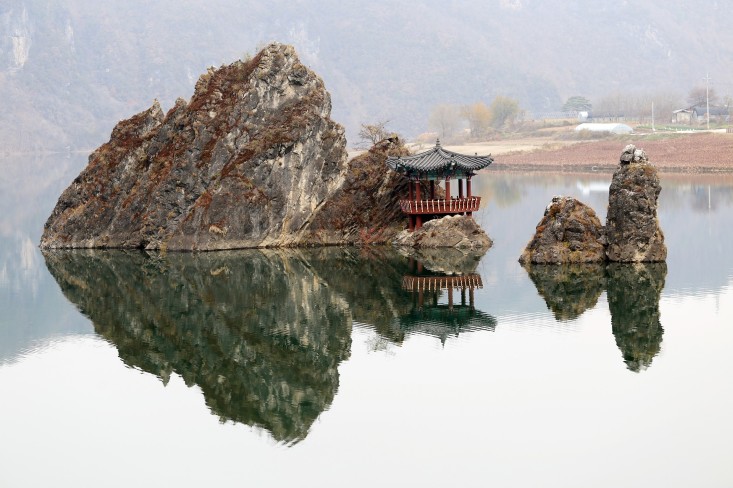
Summer: Festivals and Beach Fun
Timeline: June to August
Summer in South Korea is hot and humid but filled with exciting festivals, beach fun, and music events, making it the best time to visit South Korea for those seeking a vibrant and energetic atmosphere.
- June: Early summer brings warm weather and the start of festival season. Temperatures range from 65°F to 80°F (18°C to 27°C).
- July: Mid-summer is peak festival season, with hot and humid weather. Temperatures can exceed 86°F (30°C), so be prepared for the heat.
- August: Late summer is marked by more festivals and the start of the beach season. Temperatures remain high, but the end of August sees a slight cool-down.
Weather Conditions and Temperatures
Summer weather in South Korea is hot and humid, with temperatures often exceeding 86°F (30°C). It’s also the rainy season, so expect occasional heavy downpours.
Major Summer Festivals and Events
Summer is packed with thrilling festivals and events, making it the best time to visit South Korea for festival-goers and beach lovers.
- Boryeong Mud Festival: Held in July, this unique festival attracts thousands of visitors eager to get dirty and have fun.
- Beach Destinations:
- Busan: South Korea’s second-largest city offers beautiful beaches like Haeundae and Gwangalli.
- Jeju Island: A subtropical paradise with stunning beaches, waterfalls, and volcanic landscapes.
- K-pop Concerts and Music Festivals: Summer is the peak season for K-pop concerts and music festivals, offering an immersive experience into South Korea’s vibrant music scene.
Recommended Activities and Attractions in Summer
Summer’s hot weather and festival season offer a variety of exciting activities and attractions.
- Water Sports: Engage in thrilling water sports like jet-skiing, parasailing, or scuba diving at South Korea’s beautiful beaches.
- Festival Hopping: Plan your trip around exciting festivals and events to experience South Korea’s vibrant culture.
- Explore Cities: Visit bustling cities like Seoul, Busan, or Daegu to enjoy their unique summer atmospheres.
Pros and Cons of Visiting in Summer
Pros:
- Exciting festivals and beach fun
- Vibrant music scene and K-pop concerts
- Ideal for water sports and outdoor activities
Cons:
- Hot and humid weather
- Rainy season with occasional heavy downpours
- Peak tourist season with larger crowds and higher prices
If you’re a festival-goer, beach lover, or K-pop enthusiast, summer might be the best time to visit South Korea for you.
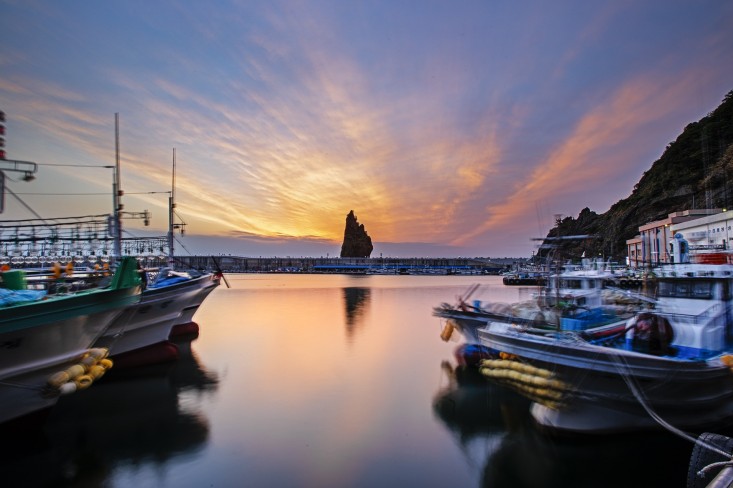
Fall: Vibrant Foliage and Harvest Season
Timeline: September to November
Fall in South Korea is a stunning time, with vibrant fall foliage, pleasant temperatures, and harvest festivals, making it the best time to visit South Korea for those seeking a balance between nature, culture, and comfort.
- September: Early fall brings the start of fall foliage and mild weather. Temperatures range from 60°F to 75°F (15°C to 24°C).
- October: Mid-fall is marked by peak fall foliage and harvest festivals. Temperatures remain pleasant, ranging from 50°F to 70°F (10°C to 21°C).
- November: Late fall brings cooler weather and the preparation for winter. Temperatures drop to 35°F to 55°F (2°C to 13°C).
Weather Conditions and Temperatures
Fall weather in South Korea is generally pleasant, with temperatures ranging from 35°F to 75°F (2°C to 24°C). The air is crisp, and the skies are often clear, making it ideal for outdoor activities.
Fall Foliage and National Parks
Fall is the perfect time to explore South Korea’s national parks and enjoy the vibrant fall foliage.
- Seoraksan National Park: Known for its stunning fall colors, this park offers breathtaking hikes and scenic views.
- Naejangsan National Park: Another top spot for fall foliage, this park features beautiful temples and waterfalls.
Traditional Festivals and Harvest Season
Fall is packed with traditional festivals and harvest events, making it the best time to visit South Korea for those interested in the country’s rich cultural heritage.
- Jinju Lantern Festival: Held in October, this festival features thousands of lanterns floating along the Namgang River, creating a mesmerizing spectacle.
- Fall Cuisine and Seasonal Dishes: Fall is the harvest season, so you can enjoy fresh produce and traditional Korean dishes made with seasonal ingredients like persimmons, chestnuts, and sweet potatoes.
Recommended Activities and Attractions in Fall
Fall’s pleasant temperatures and vibrant foliage offer a variety of exciting activities and attractions.
- Hiking: Explore South Korea’s national parks and enjoy the stunning fall colors.
- Temple Visits: Visit historic temples and experience their serene atmospheres amidst the fall foliage.
- Food Tours: Indulge in fall’s seasonal dishes and fresh produce at local markets and restaurants.
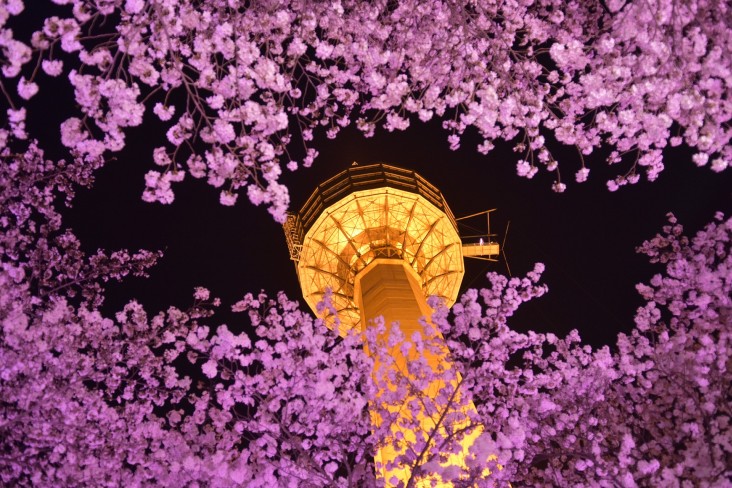
Pros and Cons of Visiting in Fall
Pros:
- Vibrant fall foliage and pleasant temperatures
- Harvest festivals and cultural events
- Ideal for hiking and outdoor activities
Cons:
- Can be crowded at popular fall foliage spots
- Weather can be unpredictable, with occasional rain
- Not ideal for beach activities or winter sports
If you’re a nature lover, culture enthusiast, or foodie, fall might be the best time to visit South Korea for you.
Winter: Snow Sports and Cultural Experiences
Timeline: December to February
Winter in South Korea is cold and snowy but offers exciting snow sports and unique cultural experiences, making it the best time to visit South Korea for those seeking a winter wonderland adventure.
- December: Early winter brings the start of snow season and winter festivals. Temperatures range from 25°F to 40°F (-4°C to 4°C).
- January: Mid-winter is peak snow sports season, with cold temperatures and occasional heavy snowfall. Temperatures can drop below freezing.
- February: Late winter is marked by the Lunar New Year and the end of the winter season. Temperatures remain cold, but the end of February sees a slight warm-up.
Weather Conditions and Temperatures
Winter weather in South Korea is cold and snowy, with temperatures often dropping below freezing. However, the cold weather also brings unique winter experiences and snow sports.
Winter Sports and Destinations
Winter is the perfect time to engage in thrilling snow sports and explore South Korea’s winter destinations.
- Pyeongchang Region: Known for its world-class ski resorts, this region offers excellent skiing and snowboarding opportunities. It even hosted the 2018 Winter Olympics.
Cultural Experiences and Festivals
Winter is packed with unique cultural experiences and festivals, making it the best time to visit South Korea for those interested in the country’s rich traditions.
- Lunar New Year (Seollal): A significant holiday in February, featuring traditional rituals, family gatherings, and delicious food.
- Hwacheon Sancheoneo Ice Festival: Held in January, this festival offers a unique winter experience with ice fishing, snow sculptures, and other winter activities.
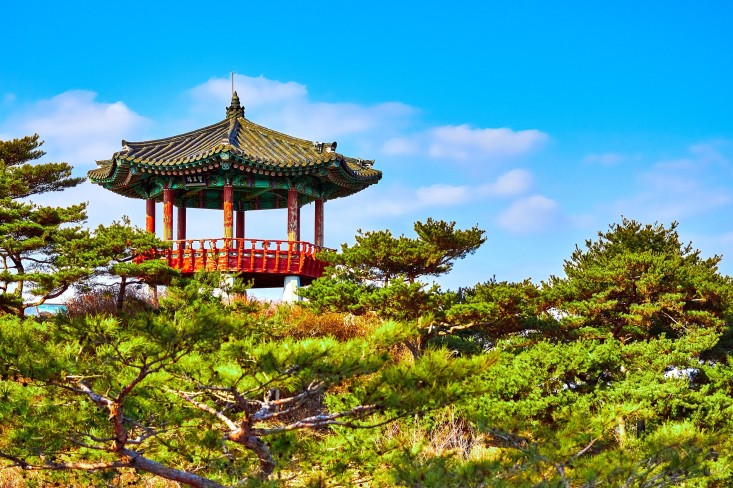
Recommended Activities and Attractions in Winter
Winter’s cold weather and snowy landscapes offer a variety of exciting activities and attractions.
- Snow Sports: Engage in thrilling snow sports like skiing, snowboarding, or ice skating at South Korea’s world-class resorts.
- Cultural Tours: Explore South Korea’s rich cultural heritage by visiting historic sites, temples, and museums.
- Hot Springs: Relax and unwind at South Korea’s natural hot springs, known as “jjimjilbang.”
Pros and Cons of Visiting in Winter
Pros:
- Exciting snow sports and winter activities
- Unique cultural experiences and festivals
- Fewer crowds and lower prices
Cons:
- Cold and snowy weather
- Shorter daylight hours
- Not ideal for beach activities or spring/fall foliage
If you’re a winter sports enthusiast, culture lover, or seeking a unique winter wonderland experience, winter might be the best time to visit South Korea for you.
Special Events and Festivals
Regardless of the season, South Korea is always buzzing with special events and festivals. If you’re planning your trip around a specific event, that could also determine the best time to visit South Korea for you. Here are some notable events and festivals throughout the year:
- Busan International Film Festival: Held in October, this prestigious film festival attracts movie enthusiasts from all over the world.
- Ultra Korea: A massive electronic dance music festival held in June, featuring top international DJs and artists.
- Boseong Green Tea Festival: Held in May, this festival celebrates South Korea’s green tea culture with tea-picking, traditional ceremonies, and performances.

Weather Considerations
When deciding the best time to visit South Korea, it’s essential to consider the weather. South Korea experiences four distinct seasons, each with its unique characteristics. Spring and fall offer mild weather and beautiful landscapes, making them popular choices for many travelers. Summer is hot and humid but perfect for beach lovers and festival-goers. Winter is cold and snowy, ideal for snow sports and cultural experiences.
Here are some tips for dealing with different weather conditions:
- Spring: Pack a light jacket and an umbrella for occasional rain showers.
- Summer: Stay hydrated, wear light and breathable clothing, and be prepared for occasional heavy downpours.
- Fall: Dress in layers, as temperatures can vary throughout the day.
- Winter: Bundle up with warm clothing, and don’t forget your winter sports gear if you plan to hit the slopes.
Budget and Crowd Considerations
Budget and crowd levels are also crucial factors to consider when determining the best time to visit South Korea. Peak tourist seasons, such as summer and during major festivals, tend to be more crowded and expensive. If you’re looking to save money and avoid crowds, consider visiting during the shoulder seasons of spring and fall, or even winter if you don’t mind the cold.
Here are some tips for saving money and avoiding crowds:
- Spring and Fall: Visit during the shoulder seasons for pleasant weather, fewer crowds, and lower prices.
- Winter: Take advantage of winter’s fewer crowds and lower prices, but be prepared for cold weather.
- Book in Advance: Regardless of the season, booking your accommodations and attractions in advance can help you secure better deals and availability.
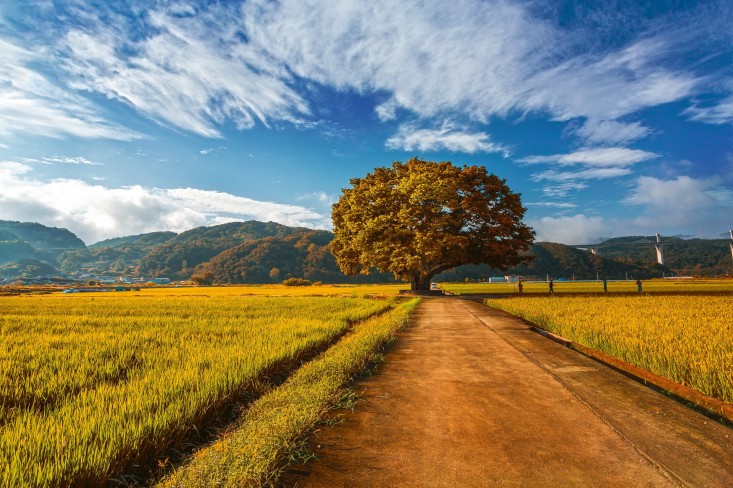
Regional Variations
It’s also worth noting that the best time to visit South Korea can vary depending on the region you plan to explore. For example, Jeju Island has a subtropical climate, making it a great destination year-round. In contrast, the northern regions experience more extreme temperatures, with hot summers and cold winters.
Here are some regional variations to consider:
- Jeju Island: With its subtropical climate, Jeju Island offers beautiful beaches, waterfalls, and volcanic landscapes year-round.
- Northern Regions: These regions experience more extreme temperatures, with hot summers and cold winters. However, they also offer unique experiences like skiing in the winter and hiking in the summer.
Conclusion
In conclusion, the best time to visit South Korea ultimately depends on your personal preferences and what you hope to experience during your trip. Whether you’re drawn to the cherry blossoms of spring, the festivals of summer, the vibrant foliage of fall, or the snow sports of winter, South Korea offers a unique and memorable experience throughout the year.
So, pack your bags and get ready to explore the Land of the Morning Calm – no matter when you choose to visit, you’re sure to have an unforgettable adventure! And remember, the best time to visit South Korea is whenever you’re ready to embrace its rich culture, delicious food, and breathtaking landscapes.
Happy travels, and see you soon in South Korea!

